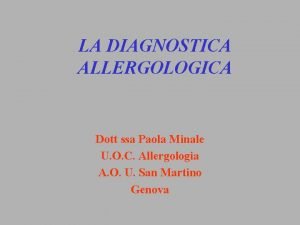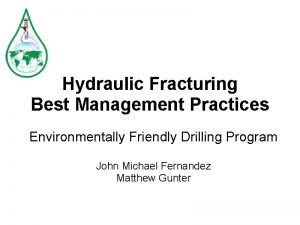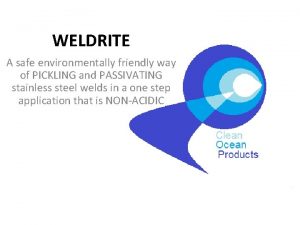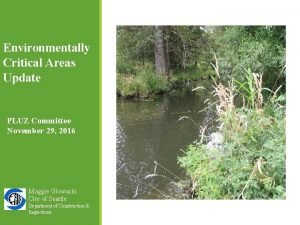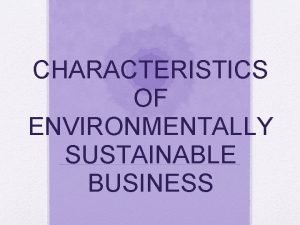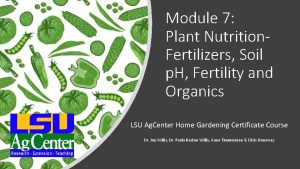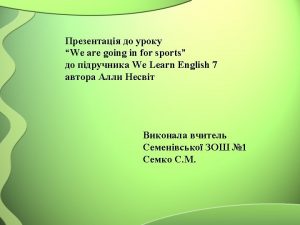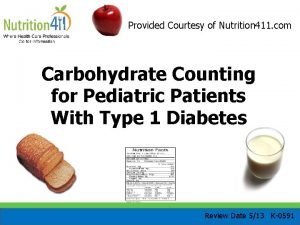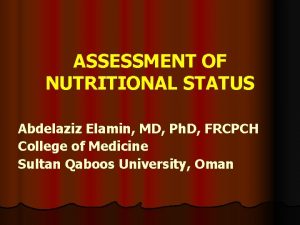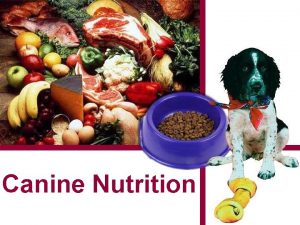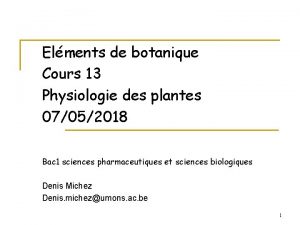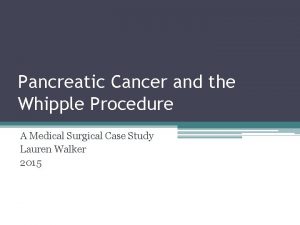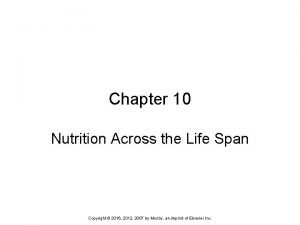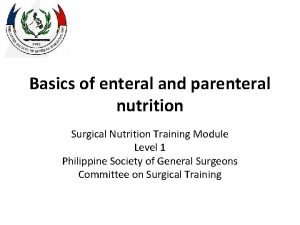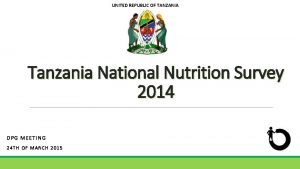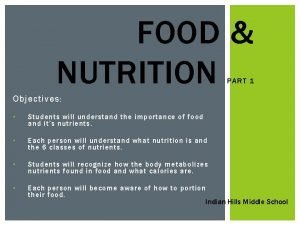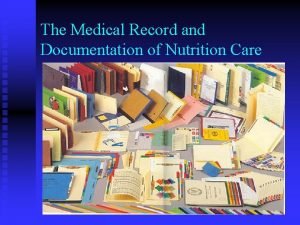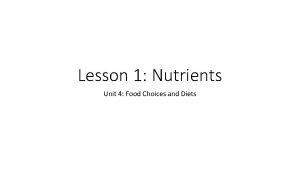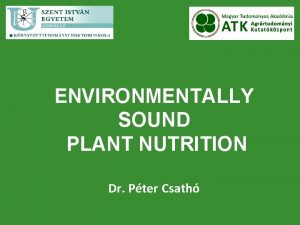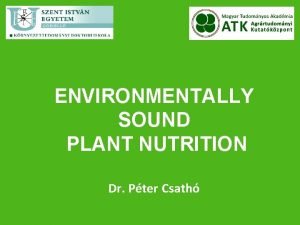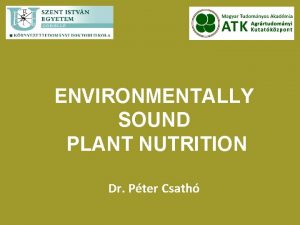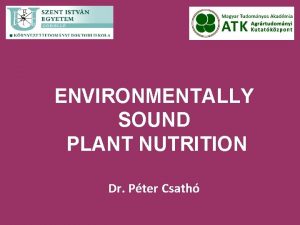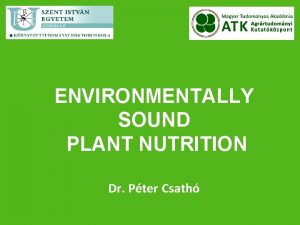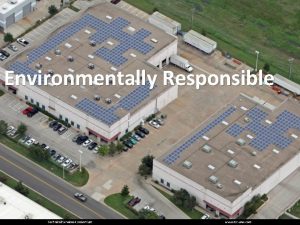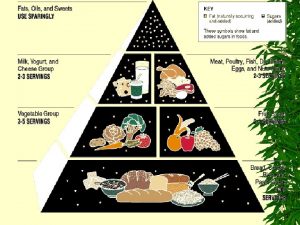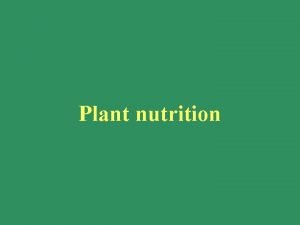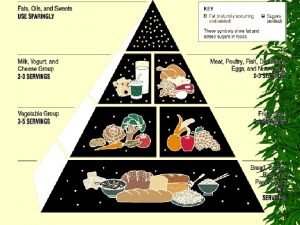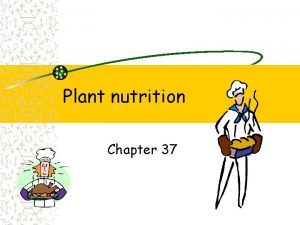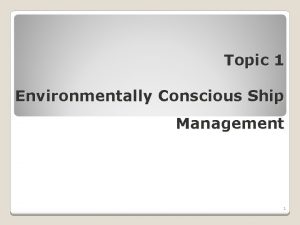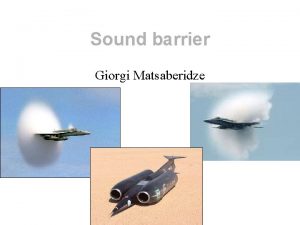ENVIRONMENTALLY SOUND PLANT NUTRITION Dr Pter Csath I

































- Slides: 33

ENVIRONMENTALLY SOUND PLANT NUTRITION Dr. Péter Csathó

I recommend this course to my Professors who taught me the first steps and basics of this beautiful profession, and have accompanied my career with their advice and encouragement. Sarkadi János (1920 -2006) Kádár Imre (1943 - ) 1. History of agriculture and soil fertility

ENVIRONMENTALLY SOUND PLANT NUTRITION 1. History of agriculture and soil fertility 2. Basic principles and methods of soil tests (30 slides) 3. Principles and methods of plant analysis 4. Types of Plant Nutrition Experiments 5. Principles and method of nutrient balance 6. Plant nutrition and environmental aspects of soil p. H and lime status 7. Assessing of organic farming from the aspect of sustainable plant nutrition 8. The environmental aspects of plant nutrition 9. Heavy metal load of agricultural production related to plants nutrition 10. The basics of environmentally sound plant nutrition advisory system : Evaluation of the database of Hungarian long-term field NPK fertilization exeriments 11. The structure of environmentally sound plant nutrition advisory system 12. Comparative evaluation of the environmentally sound plant nutrition advisory system, and its application in case of some farms

1. History of agriculture and soil fertility ENVIRONMENTALLY SOUND PLANT NUTRITION

„ From all the results, which humans achieved in the last 150 years, perhaps nothing better contributed to the welfare of growth, such as the development of agriculture. " (Salmon és Hanson, 1970) 1. History of agriculture and soil fertility

The cradle of Humans The fertile crescent The volcanic cones "skirt" "God-fertilized land" We are only modeling this process by organic and synthetic process fertilization 1. History of agriculture and soil fertility

Fertility of soil in different historical eras To let the land lie fallow/ itinerant agriculture / Set-aside / land cultivation / 2 field system 3 field system Black fallow, deepening plowing 1. History of agriculture and soil fertility

Ancient greeks and Romans - The comparison of the effect of poultry manure with the beef and lamb manure. - The positive effect of fallowing - Green manuring - The yield-increasing role of legumes - The use of mineral fertilizers: marl, gypsum, lime, wood ashes. - The advantages of plants rotation 1. History of agriculture and soil fertility

Asian cultures (China, Japan, Southeast Asia nations) Already thousands of years ago: regular fertilization. The main reason: The population density was high and they had not fertile land reserves that could be involved into cultivation 1. History of agriculture and soil fertility

In the Middle East and Holy Land They knew the importance of fertilization. Jesus' parable of the barren fig tree 1. History of agriculture and soil fertility

1. History of agriculture and soil fertility

The densely populated Netherlands in the 1500 s they had a brisk trade with manure fertilizer (Dreakhandel) Italy : In 1800 collection of manures Paris: dried feces + peat : poudrette Germany 1800: They also trade with manure 1. History of agriculture and soil fertility

Eastern Europe : Sufficient amount of arable land is available. The lands were involved into cultivation relatively recently /e. g. regulation of the river Tisza / They took not too much care for manure handling and adding it to the area. 1. History of agriculture and soil fertility

West Europe: The appreciation of farmyard manure Agriculture that let the land lie fallow : increasing crop growth with the use of farmyard manure Crop rotation: farmyard manure, the use of legumes Thaer: humus theory stated that the food of plant is humus Albrecht Thaer (1752 -1828) 1. History of agriculture and soil fertility

The father of field experimentation -Pot and field experiments - N-fixation of legumes -CO 2 uptake - Nutrient balance Jean-Baptiste Boussingault (1802 -1887) 1. History of agriculture and soil fertility

He conducted pioneering research in the agricultural chemistry in the first half of the 1800 s. His early articles and books opened a new era of agronomic sciences. In 1826 he refuted theory of humus in his article. In 1828 he published another, more expansive essay on the topic of soil chemistry and plants minerals feeding, which included the essence of the minimum law. Liebig made popular these pioneering discoveries of Sprengel in his book with the title of Agricultural and physiological application of organic chemistry published in 1840 Philipp Carl Sprengel (1787 -1859)

The need of returning the nutrients which are taken up by plants If we neglect it : we made a robber economy. The disintegration of many of the old empires and the great migrations can be attributed to this robber economy Justus von Liebig (1803 -1873) 1. History of agriculture and soil fertility

The development and importance of fertilization Sprengel and Liebig's theory of mineral refuted theory of humus by Thaer The importance of phosphorus and potassium + Boussinggault the importance of nitrogen 1. History of agriculture and soil fertility

Relationship between cereal grain yield , the use of chemicals, mechanization and population density between the two world wars (Prjanisnyikov, 1945) County The Netherlands Belgium Gemany The USA Yield Fertilizer* Tractor t/ha NPK, kg/ha pcs/1000 ha 3, 0 2, 8 2, 2 0, 9 109 89 67 12 1 10 * Related to N + P 2 O 5 + K 2 O kg/ha arable land 1. History of agriculture and soil fertility Population density person/km 2 217 257 138 13

Agroclimatic and integrated agricultural zones of the USA States of US Average temperature The amount of yearly precipitate Agricultural zones

The Russian soil-agrochemical school Vasily Dokucsajev (1846 -1903): genetic soil classification Dmitri Mendeleev (1834 -1907): National field fertilization experiment Konstantin Ketanovic Gedrojc (1872 -1932): The first description of soil adsorption complex 1. History of agriculture and soil fertility

The location of essential elements for plats in Mendeleev's periodic system 1. History of agriculture and soil fertility

Sprengel, Liebig minimum law Plant growth is determined by the scarcest (or minimum) nutrient available to it. If one growth factor is deficient, plant growth is limited, even if all other nutrients are adequate Plant growth can be improved by increasing the supply of deficient nutrients. Liebig's barrel (right). 1. History of agriculture and soil fertility

A Mitscherlich diminising response curve : with successive Elihardt Alfred Mitscherlich (1874 -1956) applications of fertilizers the yield increments become progressively smaller. (tettem be egy angol ábrát és, History of agriculture and soil fertility még két 1. ábrát)

Mitscherlich law yield Nutrient supply

yield Mitscherlich law (diminishing response curve) Fertilizer doses

Nutrition requirements of different farming methods (Kádár, 1979) Fallow farming without plough Fallow farming with plough Crop rotation at the turn of the century Hungary in the 1970 s Intensive farming in the 1980 s 0, 1 -0, 2 t/ha 0, 4 -0, 6 t/ha 1, 0 -1, 5 t/ha 3 -4 t/ha 5 -6 t/ha 8 -10 t/ha 1. History of agriculture and soil fertility

Four-year plant NPK losses under different farming conditions kg/ha (Kádár 1979) Farming methods N P 2 O 5 K 2 O Sum Fallow farming (own estimation ) Farming in Előszállás (Cserháti és Kosutány 1887) Crop rotation in Rothamstedi in the XIX. century (Cooke 1965) Farming in Magyaróvár (Cserháti és Kosutány 1887) State farm in 1970 -75 (own estimation) Modern crop rotation in England (Cooke 1965) Leading farms in the 1980 s (own estimation) 12 4 2 18 20 8 5 33 64 21 7 92 61 24 16 101 337 108 160 605 438 144 490 1072 674 216 320 1210 1. History of agriculture and soil fertility

NPK fertilizer production and application They were called commercial fertilizers initially. 1830 - Chile saltpeter (Na. NO 3) 1840 - exploration of guano sites The first "real" fertilizer in 1840, superphosphate (Liebig) Mining on potash sites in 1860 in Strassfurt 1895 - the first lime nitrogen- factory based on Frank Caro 1913 - ammonium nitrate production based on Haber-Bosh 1. History of agriculture and soil fertility

Real rockphosphate and potash stocks Their amount will be enough till 10 -100 - 1000 years (Depending on the literary source) Rock phosphate stocks: Igneous (hard): 20% Sedimentary (soft): 80% The latter has Cd contamination 1. History of agriculture and soil fertility

NPK fertilizer application of the world 1950 -2005 (FAO fertilizer almanac)

Fertilizer application in Hungary, 19012010 (Csathó és Radimszky, 2011)

 Paola minale allergologa
Paola minale allergologa Environmentally sound drilling practices
Environmentally sound drilling practices Asean working group on environmentally sustainable cities
Asean working group on environmentally sustainable cities Psia unit
Psia unit Environmentally friendly pickling
Environmentally friendly pickling Temperature glide
Temperature glide What is environmentally critical areas
What is environmentally critical areas Characteristics of an environmentally responsible business
Characteristics of an environmentally responsible business Dr nutrition
Dr nutrition “a sound mind is in a sound body”
“a sound mind is in a sound body” Sound travels fastest through
Sound travels fastest through Plant breeding for disease resistance
Plant breeding for disease resistance Plant introduction in plant breeding
Plant introduction in plant breeding Tronsmo plant pathology and plant diseases download
Tronsmo plant pathology and plant diseases download Tronsmo plant pathology and plant diseases download
Tronsmo plant pathology and plant diseases download Define plant breeding
Define plant breeding Tronsmo plant pathology and plant diseases download
Tronsmo plant pathology and plant diseases download Nutrition 411
Nutrition 411 Nutrition deficiency
Nutrition deficiency Indirect method of nutritional assessment
Indirect method of nutritional assessment Basic canine nutrition vocabulary
Basic canine nutrition vocabulary Usda food and nutrition service
Usda food and nutrition service Benefits of astaxanthin
Benefits of astaxanthin Slidetodoc.com
Slidetodoc.com Whipple procedure nutrition
Whipple procedure nutrition Nutrition across the lifespan
Nutrition across the lifespan Healthy food scavenger hunt
Healthy food scavenger hunt Unit 26 animal anatomy physiology and nutrition
Unit 26 animal anatomy physiology and nutrition Fccla national programs
Fccla national programs Enteral
Enteral Tanzania national nutrition survey 2020
Tanzania national nutrition survey 2020 Food nutrition
Food nutrition Meditech charting
Meditech charting Food and nutrition unit 4
Food and nutrition unit 4
